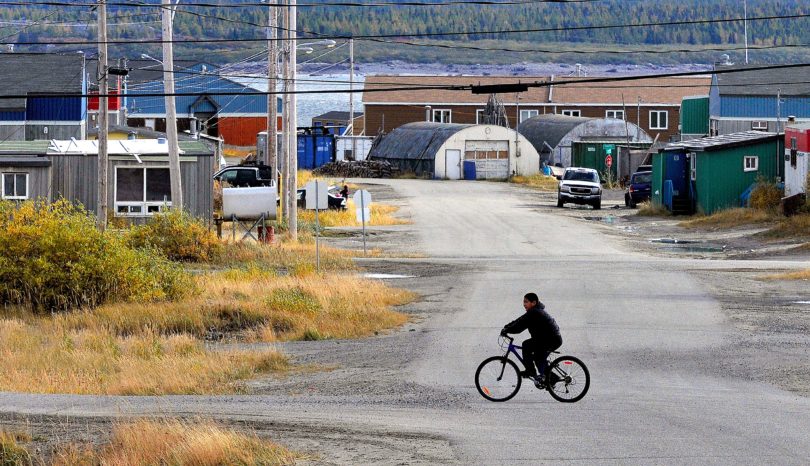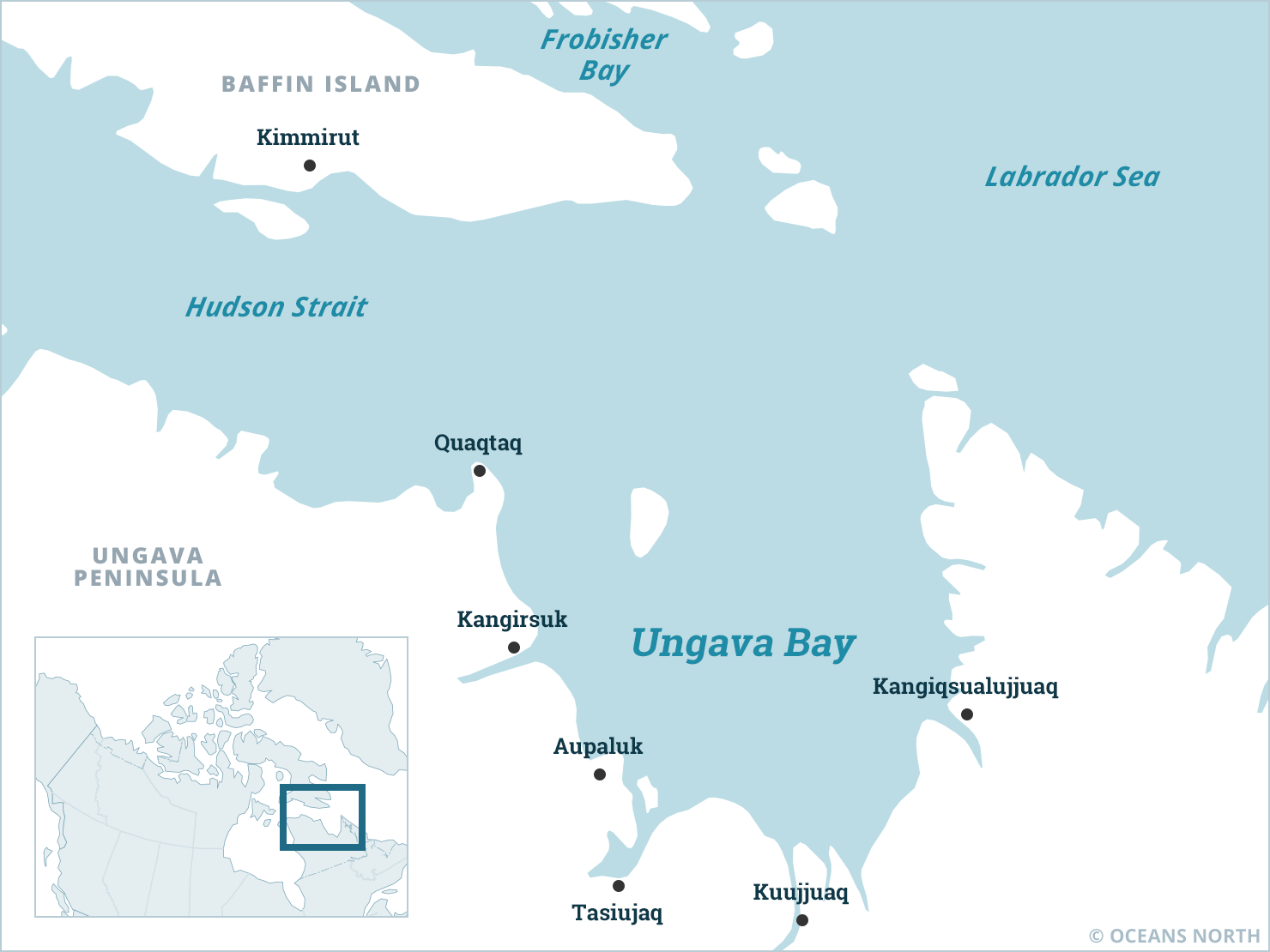Ungava Bay is a large, shallow body of water covering about 50,000 square kilometres in Nunavik, the Inuit territory of northern Quebec and is home to many species of wildlife, fish and birds. Located south of Hudson Strait and west of the Torngat Mountains in Labrador, Ungava Bay is only about 150 metres deep and is studded by small islands and inlets.
In winter, the bay is filled with thick, rubbled, first-year ice. By summer, the bay clears and has some of the highest tides in the world, including a 17-metre tide in the Bay of Leaves (Baie aux Feuilles).


